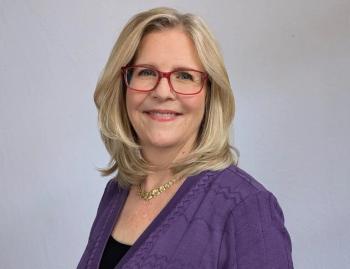
A Psychiatric Love Story: Can “Aspies” Help Save Our World?
In many climates, a cold February is relieved a bit by the Super Bowl and then by Valentine’s Day-a symbol of hope for falling in love, sometimes suddenly and unexpectedly.
[[{"type":"media","view_mode":"media_crop","fid":"17623","attributes":{"alt":"Autism","class":"media-image media-image-right","id":"media_crop_1861099403212","media_crop_h":"0","media_crop_image_style":"-1","media_crop_instance":"1034","media_crop_rotate":"0","media_crop_scale_h":"0","media_crop_scale_w":"0","media_crop_w":"0","media_crop_x":"0","media_crop_y":"0","style":"float: right; margin: 4px;","title":" ","typeof":"foaf:Image"}}]]In many climates, a cold February is relieved a bit by the Super Bowl and then by Valentine’s Day-a symbol of hope for falling in love, sometimes suddenly and unexpectedly. Sometimes it happens to us, as it once did to me. We want our patients to find love, and there are times we help them to do so. Often people nowadays try online matchmaking. Sometimes it happens and they later fall out of love, and we try to see if it can be recaptured and the relationship saved. To put ourselves in the shoes of others, so to speak, is key.
“Pet me,” he said, showing her, his fingers grazing her skin.
“Only deep pressure,” she showed him, hugging herself.
“I really don’t like kissing,” he said.
“When I put my hand on your leg,” she said, “you put your arm on my back.”1
These are excerpts from one of the most poignant and moving love stories I’ve ever read,
This is a story of two people in love-Jack Robison and Kirsten Lindsmith-both of whom had been diagnosed with Asperger’s Disorder (or as those who have been diagnosed often fondly call themselves, “Aspies”). With the help of therapists and online forums, the couple slowly learns to understand the other and respond more appropriately.
In many ways, their relationship problems are on the same spectrum (albeit on the far end) as the problems of other relationships. Some degree of empathy is essential for all successful relationships, including our everyday work. Self-empathy is essential to understand oneself. Indeed, because we are social beings, the empathy of interpersonal intelligence may be our most important skill.
Despite our capacity for empathy, physiologically processed through the mirror neurons of our brain, this capacity varies among people and circumstances. A lack of empathy may be one of the causes of what seems like intractable global problems: groups of people having different historical and cultural values; religious fundamentalism versus religious reform; not quickly enough recognizing the brutality of such leaders as Hitler and Stalin; and not having enough concern for future problems like Global Warming. Can global empathy be increased and, if so, help save our world?
An impossible dream, you say? Maybe so, but if we look at how we understood and treated the Autism Spectrum 40 years ago, maybe there’s room for some optimism. In my early career, autism was thought to be caused by “cold” or “icebox” mothers, and a lot of treatment was based on the punishment (negative reinforcement) of behavioral modification.
It had seemed to me that almost anybody with empathy would have cringed at some of these treatments, which could be why Bruno Bettelheim was nicknamed “Brutal” Bettelheim by some. Now we have progressed enough to have a recent issue of the Residents’ Journal, a publication of the American Journal of Psychiatry, devoted to all the new knowledge and advances regarding autism spectrum disorders.2 We now know that this is a neurodevelopmental disorder, not caused by mothering.
How, then, might we increase empathy? If we learn more about that from helping such people as Jack and Kristen, maybe we can develop an empathy-based therapy (say, ET for short). Empathy can be taught more in our schools. It is value free, but could be invaluable in multicultural school cultures.
Then, could there be an empathy medication, one that might revive a moribund psychopharmacology industry that keeps churning out “me too” drugs? This could be a new medication frontier.
“I wonder if I took it, whether I would be better at being affectionate,” he said.
“I wonder,” she said, “what effect it would have on me.”1
Jack had already become intrigued about the possibility of designing an empathy drug. He knew that the hormone oxytocin has become linked to trust. Today, oxytocin is used to induce labor (here, then, is a different connection to mothers), but it does not cross the blood-brain barrier. He also knew of a small study where inhaling an oxytocin nasal spray seemed to temporarily reduce some of the social problems related to Asperger Disorder.
Of course, there could not only be physiological side effects of such a drug, but social ones as well. Could leaders, the wealthy, and advertisers take advantage of such drugs? Could they produce too much caring? Could soldiers become too soft (or have to be replaced by drones)? Science fiction novels like 1984 and Brave New World showed how drugs could be used to control the population.
Not that empathy enhancement would be sufficient to change ourselves for the better. An essential ingredient, perhaps, that may need supplementation by the “morality pill” discussed by Peter Singer and Agata Singer (see The Stone, a series at www.nytimes.com/opinionator). Like empathy, morality in the sense of wanting to help others, seems to be spread along a predisposition continuum.
Computers may have changed our world, but we still need find ways to change ourselves for the better.
References:
1. Harmon A. Navigating love and autism. New York Times.
2. Tanguay PE. Autism in DSM-5. Am J Psychiatry. 2011;168:1142-1144.
Newsletter
Receive trusted psychiatric news, expert analysis, and clinical insights — subscribe today to support your practice and your patients.

















